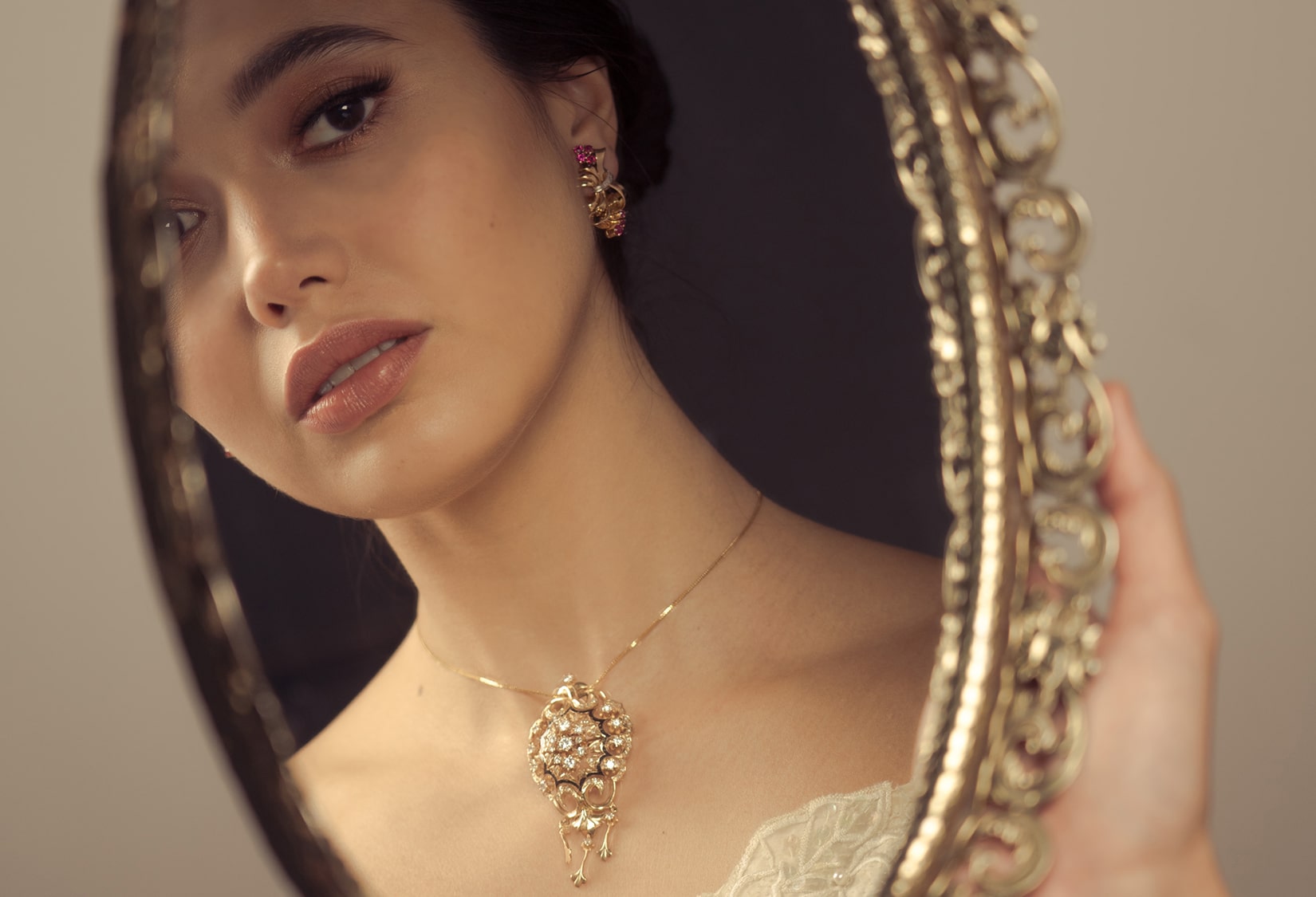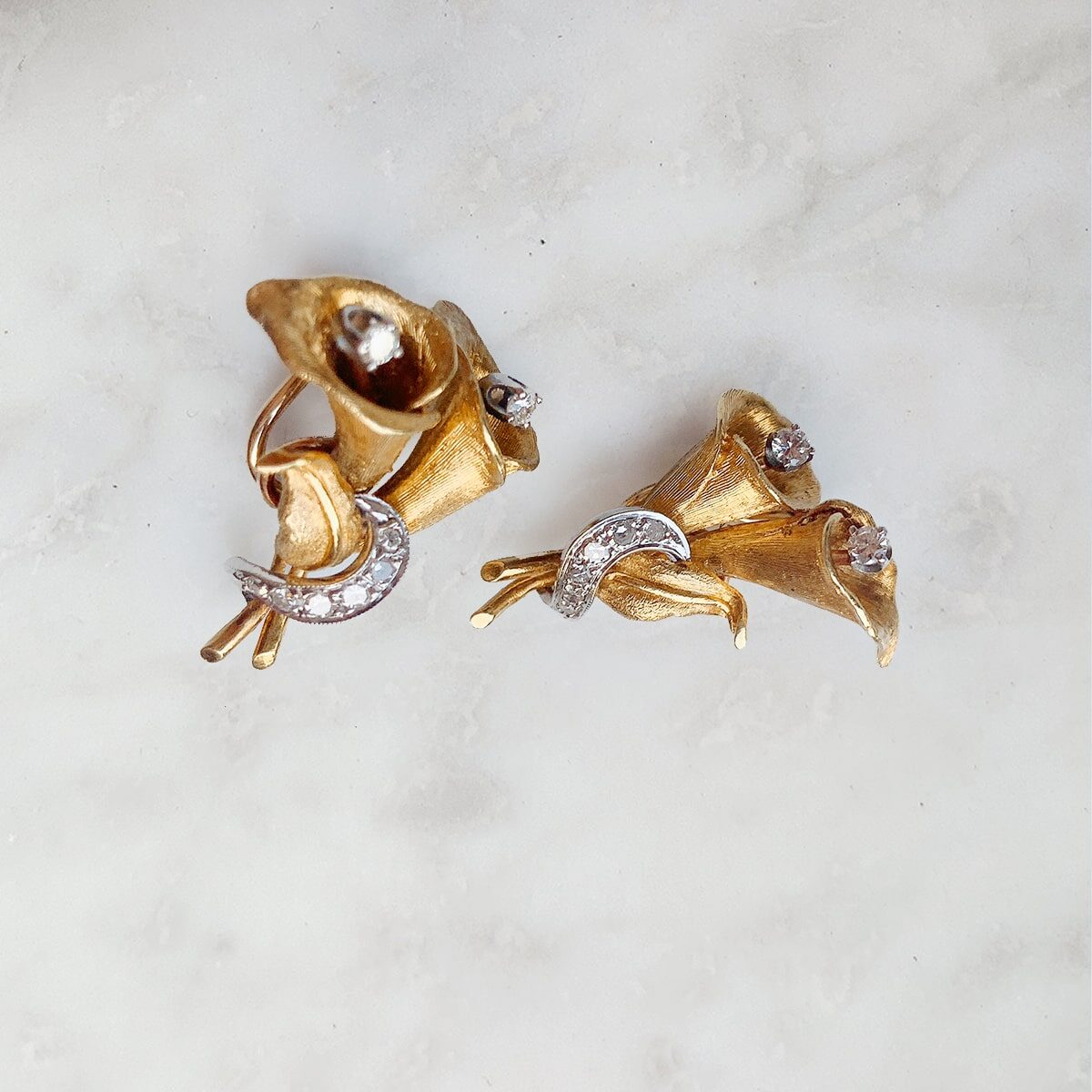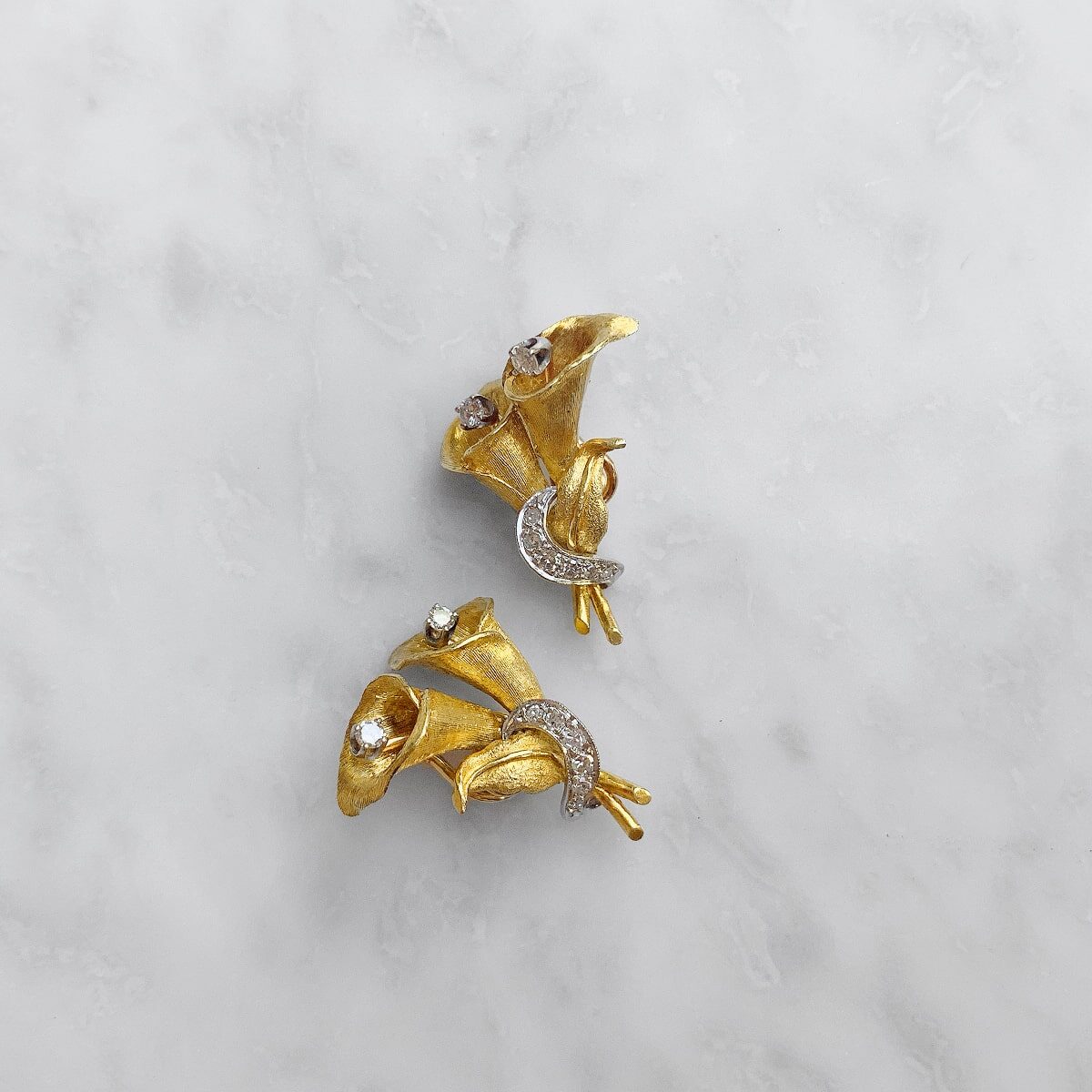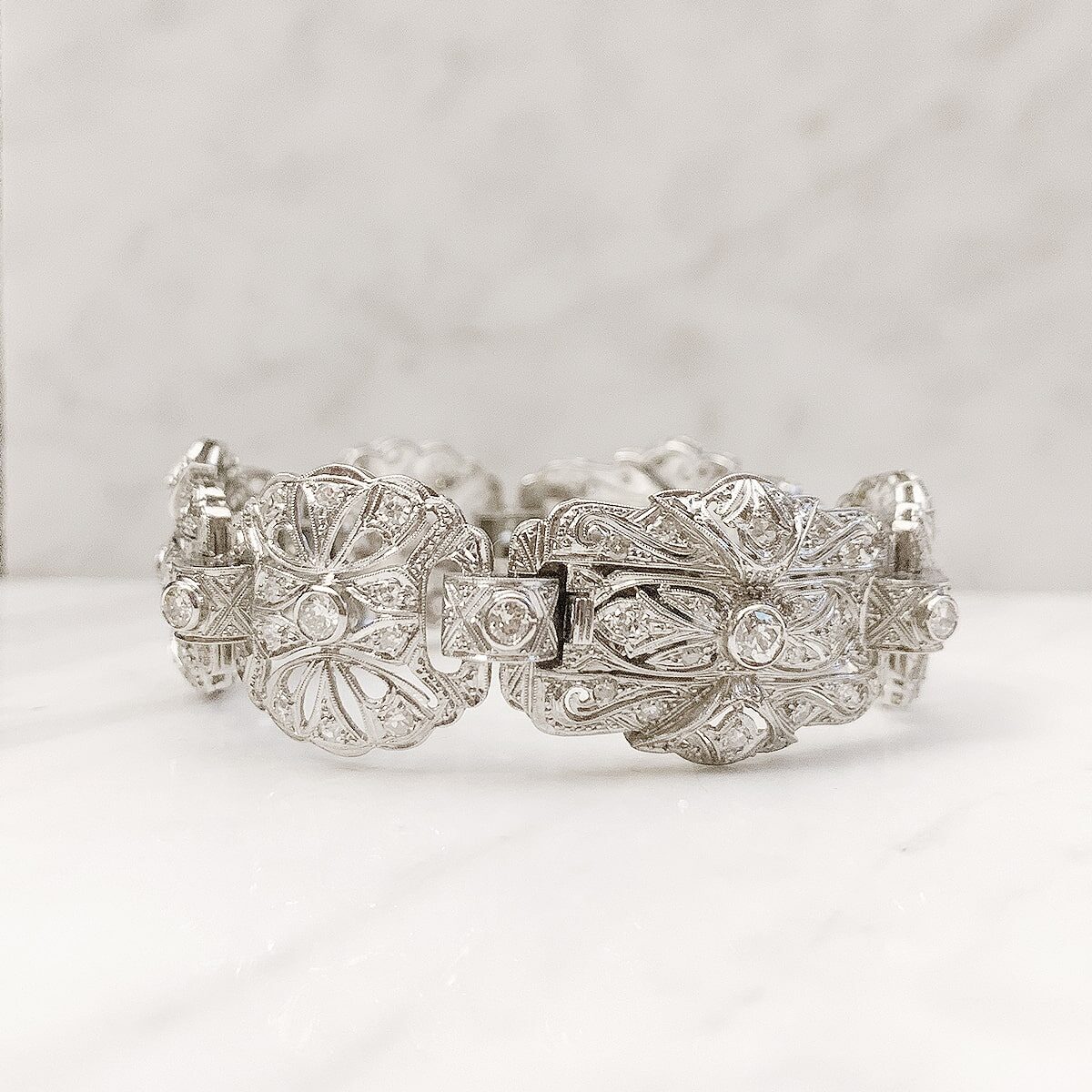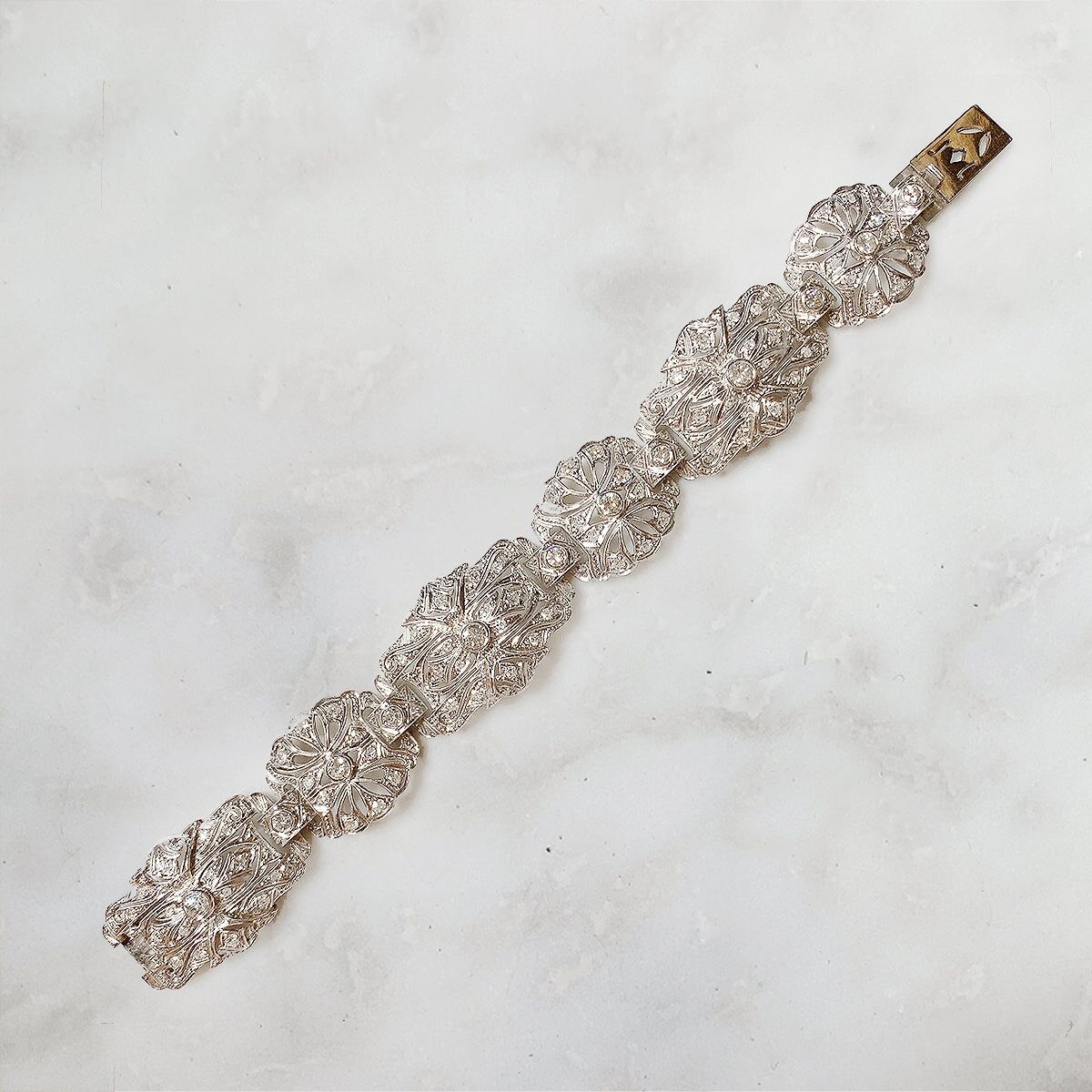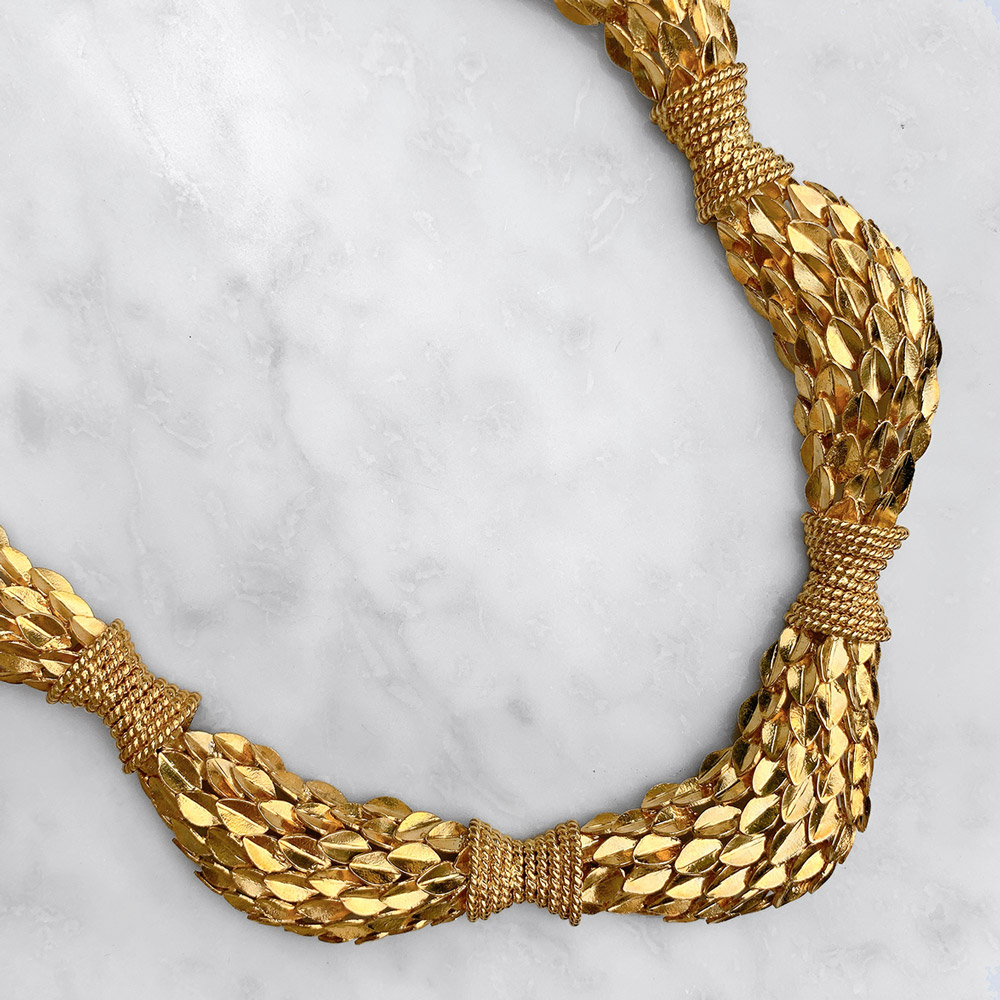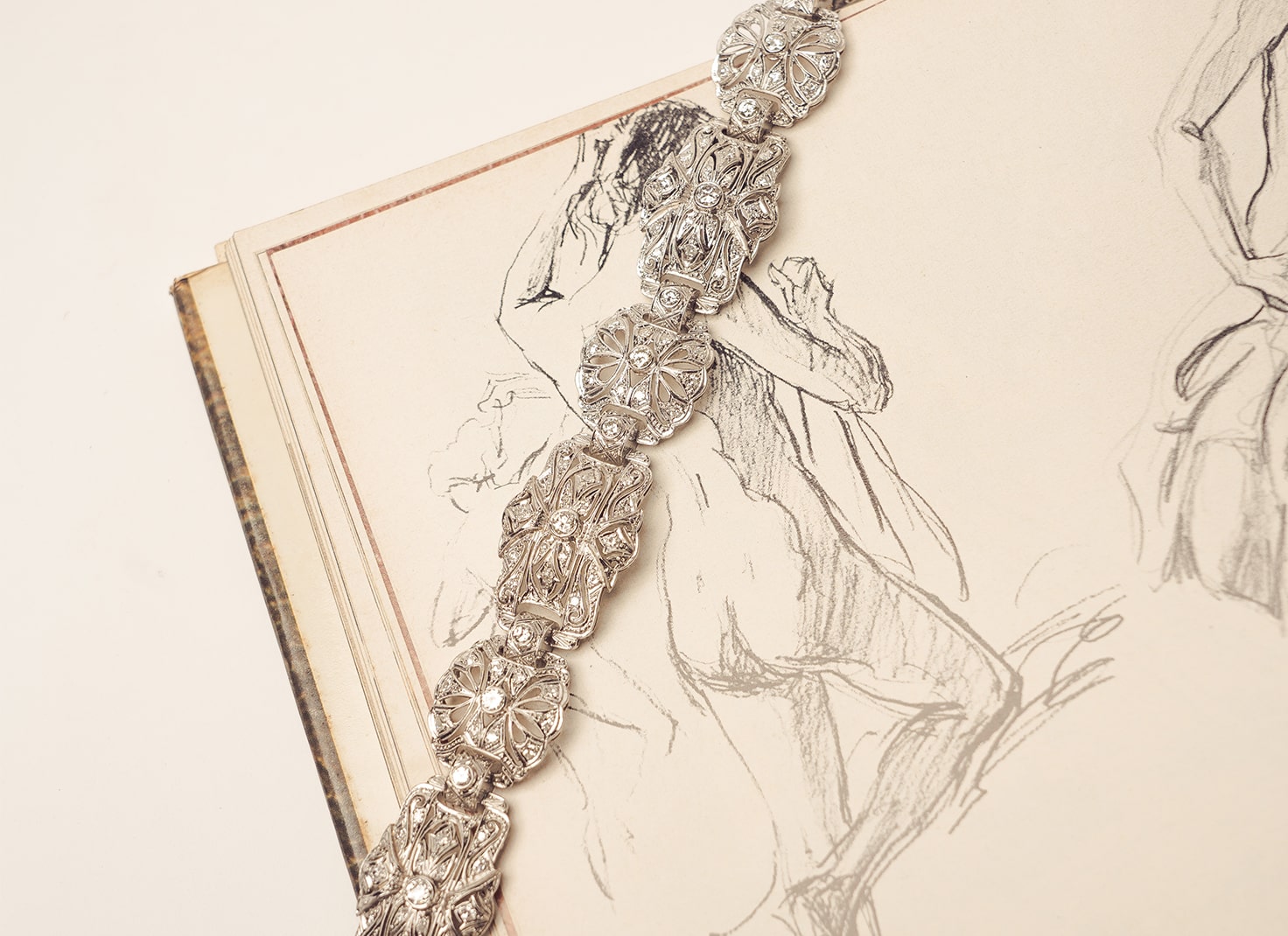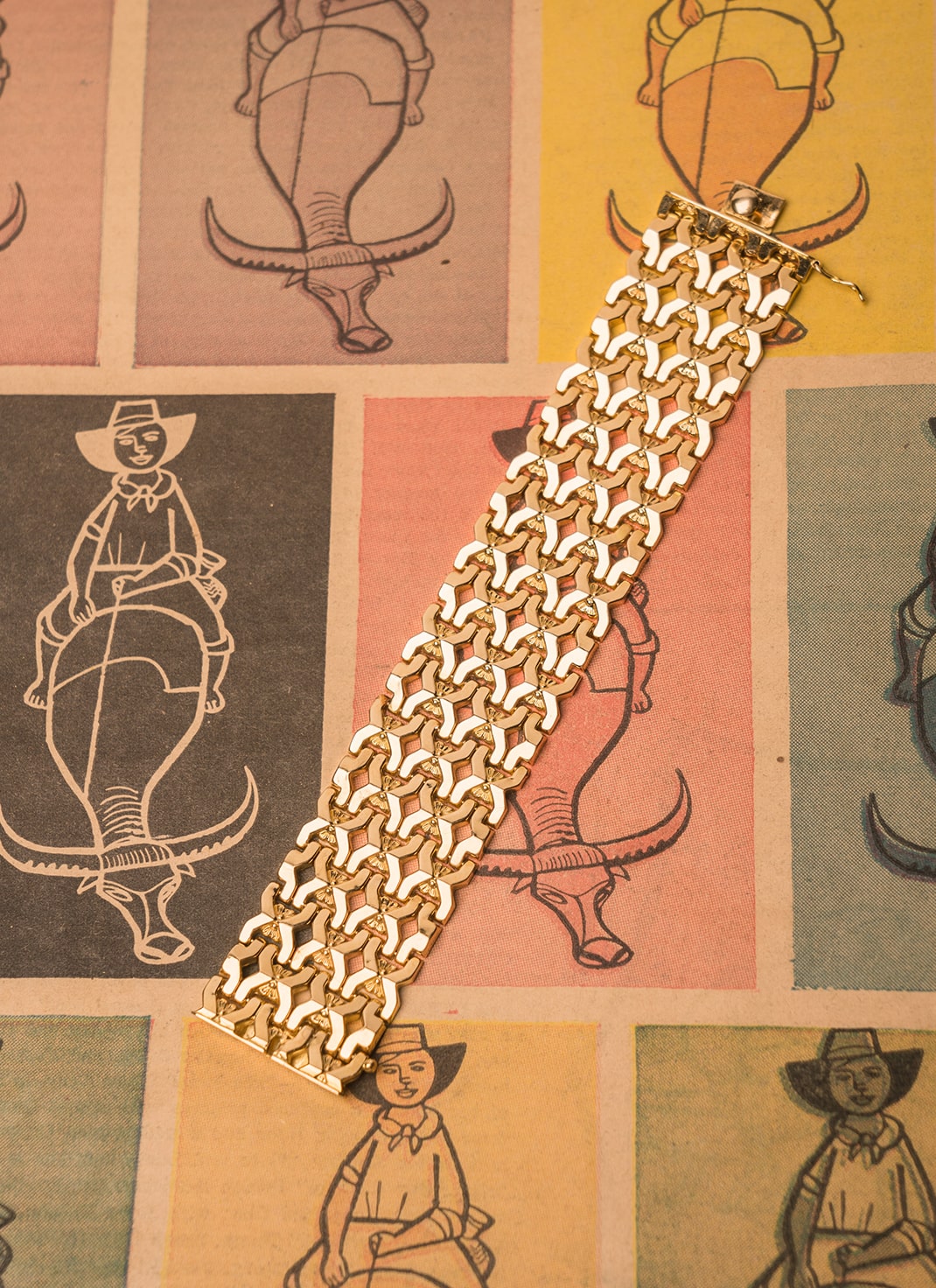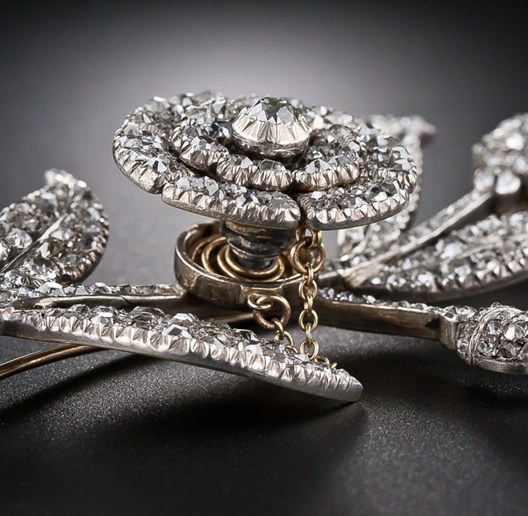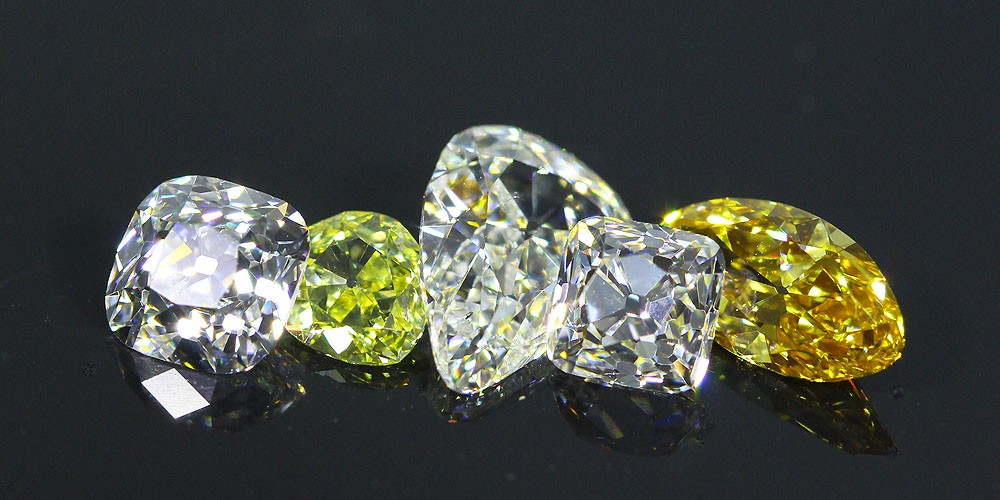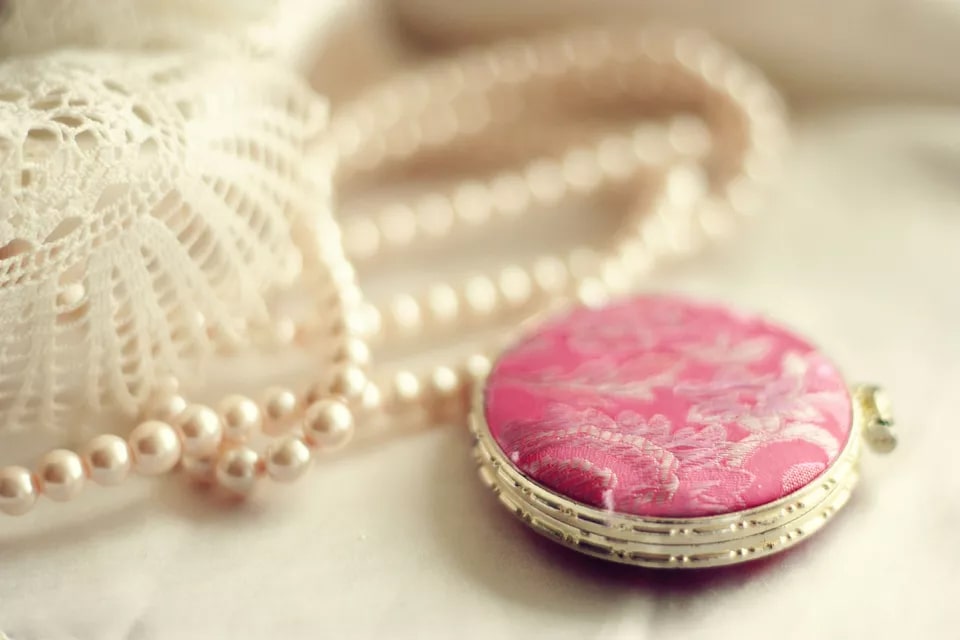Designed to last—evoking a moment held in time—intricate gold and silver finery celebrate the infinite elegance of natural and vintage gemstones.
Footnotes
A Guide to Antique Georgian Jewelry
The Georgian era is known for pivotal art movements, including the jewelry innovations of its time. Pieces were all handcrafted, with artisans hammering gold ingots and other metals into thin sheets before doing the ornate metalwork it is known for. Among the popular techniques were repousse (hammered reliefs) and cannetille (filigree wire work). Diamonds were almost exclusively used until colored stones emerged in 1750. Rare and valuable, authentic Georgian jewelry can be tricky to identify as jewelers often melted down outdated designs. Maker’s marks were also not enforced until the 1900’s, making genuine finds a real triumph for collectors.
Defining Art Deco Style
Art Deco was the definitive art movement in the 1920’s and 30’s; and a style that is still valued today, making genuine artifacts very collectible. To discern what is real; however, one should know what makes Art Deco what it is. The movement is highly colored by Art Nouveau, Bauhaus, and Cubism. Coupled with influences from American Indian, Egyptian, and other classical styles such Greco-Roman and Asian, nature and nudes are prominent motifs. Many Art Deco pieces are also symmetrical or defined by bold geometry such as angular lines, zigzags, and pyramids. This also influenced fashion, as seen in drop-waist dresses in the 1920’s.
Source: Wiggins, Pamela. The Spruce Crafts. January 19, 2020
Old Mine Cut Diamonds Guide
Traditionally, the term “old mine” refers to a natural stone produced by the earth and dug up, but it can also refer to a famous digging site known for its gemstones such as the Chivor and Muzo Emerald Mines, and the Burmese Mogok Ruby Mines. “Old mine” can also relate to the early cutting and lapidary history involved, especially since there were limited tools and technology before. Early cutters had to figure out the best way to cut a gemstone, so it absorbs and reacts to light. This resulted in rough-cut crystals, with varied forms, textures, and irregularities—which makes these antique pieces even more unique.
Source: Gem Concepts Ltd
Antique, Vintage, and Estate Jewelry Defined
Antique, vintage, and estate are often used to describe heirloom jewelry, but they are actually not interchangeable. Vintage refers to pieces that are at least 20 to 30 years old, covering items made in the 1990s or earlier, including the 1940s. Antique, on the other hand, is for jewelry that is 100 years old or older. In fact, 1920’s Art Deco pieces are already considered antique finds. Meanwhile, estate is an all-embracing term for any second-hand jewelry, whether antique or vintage. Most jewelry dealers, however, avoid this term for items more than 30 years old. Using “estate” for much older items should be verified as it may be a reproduction.
